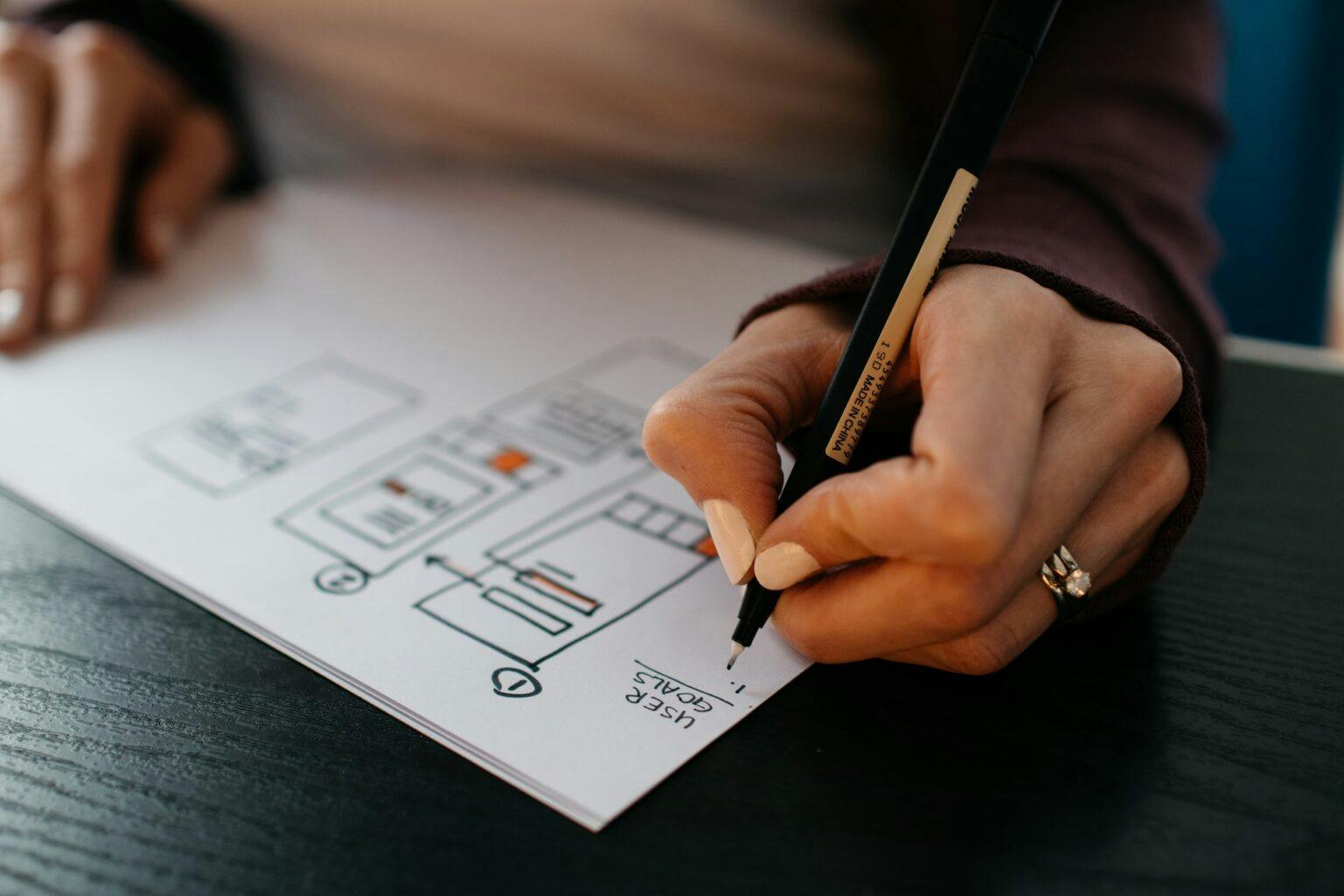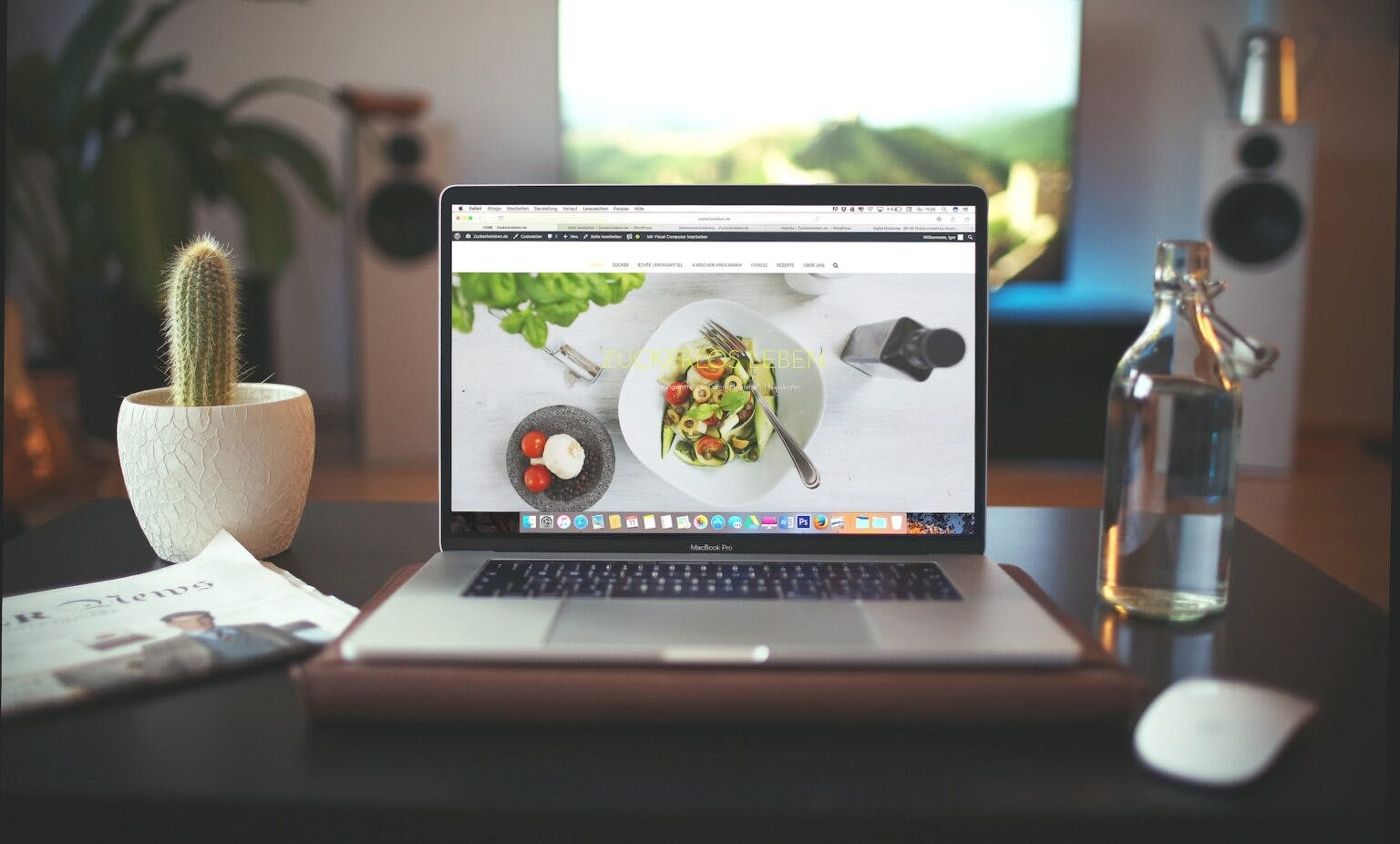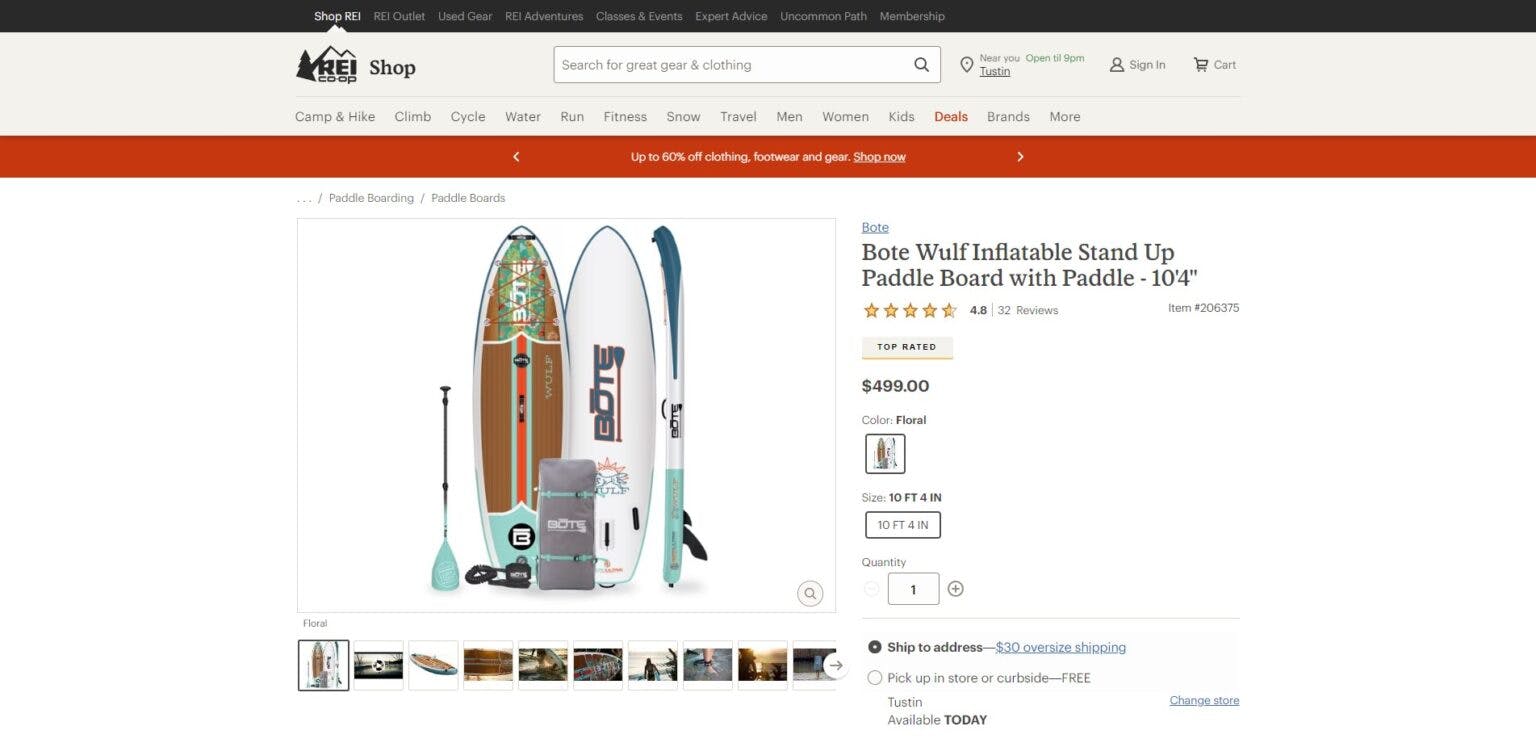The Top 10 Web Design Trends in 2024
Published January 22, 2024 by Grant Walton
In the ever-evolving landscape of web design, staying ahead of the curve is paramount. Designers must adapt to emerging trends as technology advances and user expectations shift to create engaging, intuitive, and visually appealing websites. With 2024 upon us, exploring the top web design trends anticipated to dominate the industry in the coming year is crucial.
From user experience-focused design to nostalgic Y2K effects, vibrant gradients, and dynamic typography, web design is poised for exciting transformations. This comprehensive guide will delve into the most anticipated trends to shape the digital landscape in 2024. Understanding and incorporating these trends into your design approach can elevate your projects to new heights, captivate audiences, and deliver exceptional user experiences. So, let’s journey through the top web design trends in 2024 and discover how they can redefine how we interact with the digital world.
10. UX-Focused Design
User experience (UX) has long been at the forefront of web design, but in 2024, it’s set to take center stage like never before. As the digital landscape becomes increasingly competitive, designers are doubling down on creating immersive and intuitive experiences that cater to the needs and preferences of users.
In web design, UX-focused design involves more than just aesthetics—it’s about understanding the visitor’s journey and crafting every interaction to be seamless and meaningful. From the moment a user lands on a website, every element, from the navigation bar to the hero image, is meticulously designed to engage and guide them towards their goal.

The key to successful UX-focused design lies in personalization and responsiveness. By leveraging AI-powered platforms, businesses can gather valuable insights into user behavior and preferences, allowing them to tailor real-time experiences. Whether it’s offering personalized recommendations or simplifying navigation, the goal is to create a website that captures attention and converts visitors into loyal customers.
In 2024, expect a surge in websites prioritizing user experience above all else. From streamlined navigation to immersive storytelling, UX-focused design will continue to shape the digital landscape, setting new standards for engagement and conversion.
9. Y2K Effects
Nostalgia is a powerful force; in 2024, it’s making a significant comeback in web design. Inspired by the late ’90s and early 2000s trends, designers are embracing Y2K effects to give their websites a retro yet contemporary vibe.
One of the defining features of Y2K effects is oversized text, reminiscent of the bold typography seen in early internet aesthetics. Paired with retro illustrations and vibrant colors, these elements evoke a sense of nostalgia while adding a playful touch to modern websites.

Another hallmark of Y2K design is the incorporation of static noise and glitch effects, harkening back to the early days of digital technology. By embracing these imperfections, designers can create visually striking compositions that captivate the imagination.
From marketing websites to design portfolios, Y2K effects are popping up across various industries, injecting fun and personality into the digital landscape. As we look ahead through 2024, we expect to see even more websites embracing the nostalgia of the past while pushing the boundaries of modern design.
8. Vibrant Gradients
Gradients are back with a bang, and in 2024, they’re more vibrant and eye-catching than ever before. Thanks to platforms like Instagram, which sparked a resurgence in gradient design, brands, and designers are harnessing the power of color transitions to create visually stunning websites.
Incorporating gradients into web design adds depth and dimensionality to flat layouts, instantly grabbing the viewer’s attention and guiding them through the page. Whether used as subtle accents or bold background elements, gradients can evoke emotion and convey brand personality in a way that static colors can’t match.

One of the critical advantages of gradients is their versatility. Designers can experiment with different color combinations and opacities to achieve the desired effect: a soft pastel gradient for a minimalist aesthetic or a bold, high-contrast gradient for a more dramatic impact.
From CTAs to hero images, gradients can be strategically employed to draw focus to essential elements and create a sense of visual hierarchy. By embracing this trend, brands can elevate their online presence and stand out in a crowded digital landscape.
7. Kinetic or Dynamic Typography
In the fast-paced world of web design, catching and holding a user’s attention is paramount. That’s where kinetic or dynamic typography comes into play. This emerging trend involves adding motion and animation to text elements, creating a captivating and immersive user experience.
By infusing typography with movement, designers can breathe life into static content, instantly drawing the viewer’s eye and encouraging engagement. Whether it’s a subtle fade-in effect or a bold text reveal, kinetic typography adds a dynamic element to web pages, making them more engaging and memorable.

One of the critical benefits of kinetic typography is its ability to convey emotion and tone in a way that static text cannot. By leveraging motion and timing, designers can emphasize key messages, inject personality into the content, and quickly guide the user through the page.
Moreover, kinetic typography is not just visually appealing; it’s also highly functional. Unlike static images or graphics, animated text doesn’t add unnecessary weight to web pages, ensuring optimal performance across devices and screen sizes.
We expect kinetic typography to continue gaining traction in web design, with designers pushing the boundaries of creativity to deliver truly immersive and engaging user experiences. Dynamic typography will leave a lasting impression on users, whether used as a standalone element or integrated seamlessly with other design trends.
6. Interactive Storytelling
In web design, storytelling has long been recognized as a powerful tool for engaging users and conveying brand messages. However, as we venture into 2024, designers take storytelling to new heights by introducing interactive elements.
Interactive storytelling involves dynamic features such as gamification, videos, and immersive visuals to create a narrative that unfolds as users navigate the website. By allowing users to participate actively in storytelling, designers can forge deeper connections, hold attention for longer durations, and leave a lasting impression.

One of the key advantages of interactive storytelling is its ability to cater to diverse audience preferences and learning styles. Whether users prefer to watch a video, explore an interactive map, or engage in a gamified experience, interactive storytelling offers something for everyone.
Moreover, interactive storytelling enables brands to showcase their products, services, or values more compellingly and memorably. By guiding users through interactive elements, designers can effectively communicate key messages, highlight unique selling points, and differentiate the brand from competitors.
However, incorporating interactive storytelling into web design requires careful planning and execution. Designers must balance creativity and usability, ensuring that interactive elements enhance the user experience rather than detract from it.
Interactive storytelling is poised to become an increasingly prominent trend in web design. By harnessing the power of interactivity, designers can create immersive digital experiences that captivate users, foster engagement, and drive meaningful interactions with brands.
5. Large or Oversized Text
In the evolving landscape of web design, large or oversized text is emerging as a prominent trend set to make a significant impact in 2024. This approach, characterized by bold and attention-grabbing typography, is a powerful tool for capturing visitors’ attention and conveying key messages with clarity and impact.
One of the primary advantages of large or oversized text is its ability to create a solid visual hierarchy within a webpage. By prominently featuring headlines, subheadings, or key phrases in large, bold fonts, designers can guide users’ attention to the most essential information on the page, facilitating more straightforward navigation and comprehension.

Moreover, the large text allows brands to establish a distinctive visual identity and effectively convey their personality or brand voice. Whether it’s a sleek and minimalist sans-serif font or a bold and expressive typeface, the choice of typography can play a crucial role in shaping users’ perceptions of a brand and its offerings.
Furthermore, large text enhances the responsiveness of websites across different devices and screen sizes. In an increasingly prevalent era of mobile browsing, ensuring that text remains legible and impactful on smaller screens is essential for maintaining a positive user experience.
From a strategic standpoint, large text can be strategically employed to highlight key selling points, calls to action, or important announcements. Whether showcasing a new product launch, promoting a limited-time offer, or encouraging users to subscribe to a newsletter, oversized text commands attention and encourages action.
Using large or oversized text is expected to become even more prevalent in web design. By embracing this trend and incorporating bold typography into their designs, brands can create visually striking and memorable digital experiences that resonate with users and leave a lasting impression.
4. Glassmorphism for the Hero Section
Creating a captivating hero section in web design is crucial for making a solid first impression on visitors and drawing them deeper into the website experience. One emerging trend poised to dominate websites’ hero sections in 2024 is glassmorphism.
Glassmorphism is a design style characterized by translucent or semi-transparent elements that mimic the appearance of frosted glass. This effect adds depth, dimension, and visual interest to the hero section, creating an eye-catching focal point immediately capturing visitors’ attention.
The appeal of glassmorphism lies in its ability to create a sense of elegance, sophistication, and modernity. By incorporating translucent overlays, blur effects, and subtle gradients, designers can achieve a sleek and polished aesthetic that elevates the overall look and feel of the hero section.

Moreover, glassmorphism offers a high degree of versatility, allowing designers to adapt the effect to suit a wide range of brand identities, color schemes, and visual styles. Whether it’s used to showcase striking product imagery, convey a brand’s unique personality, or evoke a sense of transparency and trustworthiness, glassmorphism can be tailored to meet each website’s specific needs and objectives.
From a practical standpoint, glassmorphism is also well-suited for enhancing the user experience. By incorporating transparent elements into the hero section, designers can create a sense of depth and layering that encourages users to explore further and engage with the content. Additionally, subtle animations and hover effects can further enhance the interactive nature of the hero section, providing users with a dynamic and engaging experience.
Glassmorphism is poised to become an increasingly popular design trend for hero sections. By leveraging this design style’s elegance, versatility, and interactivity, brands can create visually stunning and highly engaging hero sections that leave a lasting impression on visitors and set the tone for the rest of the website experience.
3. Handmade Illustrations
In the dynamic world of web design, visuals play a pivotal role in capturing visitors’ attention and conveying key messages effectively. As we venture into 2024, one trend set to impact websites significantly is using handmade illustrations.
Handmade illustrations add a unique and personalized touch to web design, allowing brands to showcase their creativity, personality, and storytelling prowess. Unlike stock images or generic graphics, handmade illustrations are crafted by hand, imbuing them with a sense of authenticity, warmth, and charm that resonates with audiences on a deeper level.
One of the primary advantages of handmade illustrations is their versatility. Whether it’s whimsical doodles, intricate sketches, or bold paintings, handmade illustrations can be tailored to suit a wide range of brand identities, design aesthetics, and communication objectives. Handmade illustrations offer endless possibilities for creative expression, from conveying complex ideas and concepts to evoking emotions and eliciting reactions.
Moreover, handmade illustrations have the power to create a memorable and engaging user experience. By integrating custom illustrations throughout the website, designers can guide users through the content, highlight key features and benefits, and reinforce brand messaging in a visually compelling manner. Whether through storytelling sequences, explainer graphics, or decorative elements, handmade illustrations can captivate users’ attention and keep them engaged throughout their journey.

From a branding perspective, handmade illustrations can also help differentiate a website from its competitors and establish a distinct visual identity. By incorporating unique art styles, color palettes, and themes, brands can create a cohesive and memorable visual language that sets them apart in a crowded digital landscape.
Furthermore, handmade illustrations are versatile and adaptable, making them suitable for various industries and applications. Whether it’s a playful illustration for a children’s website, a sophisticated sketch for a luxury brand, or a whimsical doodle for a creative agency, handmade illustrations can be tailored to suit the specific needs and preferences of each client or project.
Handmade illustrations are poised to become an increasingly popular design trend in web design. By harnessing the power of custom artwork, brands can create visually stunning, engaging, and memorable websites that leave a lasting impression on visitors and foster meaningful connections with their audience.
2. Clear or Visible Borders
In the ever-evolving landscape of web design, clarity, and structure are essential for guiding users through a seamless and intuitive browsing experience. As we anticipate the trends shaping the digital sphere in 2024, one key element set to gain prominence is the use of explicit or visible borders.
Clear borders serve as visual cues that help organize content, delineate sections, and create a sense of hierarchy within a web page. By defining the boundaries between different elements, such as images, text blocks, and buttons, designers can enhance readability, improve navigation, and facilitate user engagement.
One of the primary advantages of incorporating clear borders into web design is their ability to enhance visual clarity and comprehension. By providing distinct separation between content areas, borders make it easier for users to quickly scan and digest information, reducing cognitive load and improving overall usability.

Moreover, clear borders contribute to a website’s overall aesthetics, adding structure, balance, and polish to the design. Whether a thin line, a subtle shadow, or a bold stroke, borders can be customized to complement a website’s visual style and branding while ensuring consistency and coherence across different pages and screen sizes.
From a practical standpoint, visible borders also play a crucial role in responsive web design, ensuring that content remains organized and accessible across various devices and screen resolutions. By maintaining clear boundaries between elements, designers can prevent layout distortions, alignment issues, and other usability challenges that often arise in mobile and tablet interfaces.
Furthermore, clear borders can be leveraged strategically to draw attention to specific content or functionality, such as call-to-action buttons, form fields, or featured products. By framing critical elements with prominent borders, designers can guide users’ focus and encourage desired interactions, ultimately driving conversions and achieving business goals.
Clear and visible borders are poised to become integral to modern web design. By embracing this trend, designers can create visually compelling, user-friendly websites that prioritize clarity, structure, and usability, thereby delivering superior experiences for visitors across all digital touchpoints.
1. Motion Effects on the Home Page
As we venture into web design trends for 2024, one trend that continues to captivate audiences and elevate user experiences is the integration of motion effects on home pages. Motion effects encompass a variety of dynamic animations and transitions that add flair, interactivity, and engagement to the browsing journey.
In today’s digital landscape, where attention spans are fleeting, and competition for user engagement is fierce, motion effects offer a powerful tool for capturing attention, conveying brand personality, and guiding users through a narrative-driven experience.
One of the most prevalent forms of motion effects is scroll-driven animations, where elements on the page respond to the user’s scrolling behavior, creating a sense of depth and immersion. By incorporating subtle parallax effects, fading transitions, and responsive animations, designers can bring static content to life and encourage users to explore further.
Hover animations represent another popular motion effect that adds an interactive dimension to web pages. When users hover their cursor over specific elements, such as buttons, images, or links, these elements respond with dynamic animations, providing visual feedback and enhancing the overall user experience.

Loading animations, characterized by creative and eye-catching visuals displayed during page loading, serve as functional indicators and opportunities to entertain and engage users. At the same time, they wait for content to load. By incorporating branded loading animations, designers can inject personality into the browsing experience and leave a lasting impression on visitors.
Accent animations, which involve the selective use of motion effects to highlight key content or actions, are particularly effective for drawing attention to essential elements on the page, such as calls to action, product features, or testimonials. By strategically applying motion effects to specific home page areas, designers can guide users’ focus and drive desired interactions.
Finally, moving elements like sliders, carousels, and background videos can create a dynamic and visually captivating home page that grabs users’ attention and encourages exploration. By judiciously integrating motion effects into the design, designers can balance engagement and usability, ensuring that animations enhance rather than detract from the overall user experience.
However, it’s essential to exercise restraint when implementing motion effects to avoid overwhelming users or compromising performance, particularly on mobile devices. By adhering to best practices and conducting thorough testing across different platforms and devices, designers can ensure that motion effects enhance the browsing experience without detracting from usability or accessibility.
In conclusion, motion effects on the home page represent a compelling web design trend for 2024, offering designers a versatile toolkit for creating immersive, interactive, and memorable experiences that captivate audiences and drive engagement. By embracing this trend and leveraging motion effects strategically, designers can elevate their designs to new heights and deliver exceptional user experiences in the digital age.
Conclusion
As we look ahead to the landscape of web design in 2024, it’s evident that innovation and creativity continue to shape how we interact with digital experiences. The trends outlined in this article offer a glimpse into the future of web design, highlighting the importance of user-centric design principles, aesthetic experimentation, and interactive storytelling.
From the emphasis on UX-focused design to the resurgence of Y2K effects and vibrant gradients, each trend reflects a nuanced understanding of user behavior and evolving design preferences. Designers can create websites that resonate with audiences and drive meaningful interactions by prioritizing user experience and incorporating elements that engage, delight, and inspire.
Whether using kinetic typography to capture attention or integrating motion effects to guide users through a narrative journey, the trends discussed here offer a roadmap for designing compelling digital experiences that stand out in a crowded online landscape. By staying abreast of emerging trends, experimenting with new techniques, and pushing the boundaries of creativity, designers can shape the future of web design and deliver experiences that leave a lasting impression on users.
In essence, the web design trends 2024 represent a convergence of form and function, aesthetics and usability, innovation and tradition. By embracing these trends and infusing them with their unique vision and expertise, designers can create websites that meet the needs of today’s users and anticipate the desires of tomorrow’s digital audience.
As we embark on this journey of exploration and discovery, one thing remains clear: the future of web design is as exciting as unpredictable. By embracing change, experimentation, and the limitless possibilities of digital creativity, designers can chart a course toward a future where every interaction is an opportunity to delight, inspire, and connect.
Subscribe to our newsletter
STAY UP TO DATE WEB DESIGN, DEV, & SEARCH MARKETING INSIGHTS & TIPS
Suggested Content
The Ultimate Guide to Responsive Web Design
Published 2024-10-07T06:00:00 by Bryan Miller
Building Ecommerce Websites: The Ultimate Guide to Launching Your Profitable Online Store
Published 2024-01-15T06:00:00 by Bryan Miller
Breadcrumbs on Your Website: A Must-Have Feature for Seamless Navigation
Published 2023-04-17T06:00:13 by Bryan Miller



